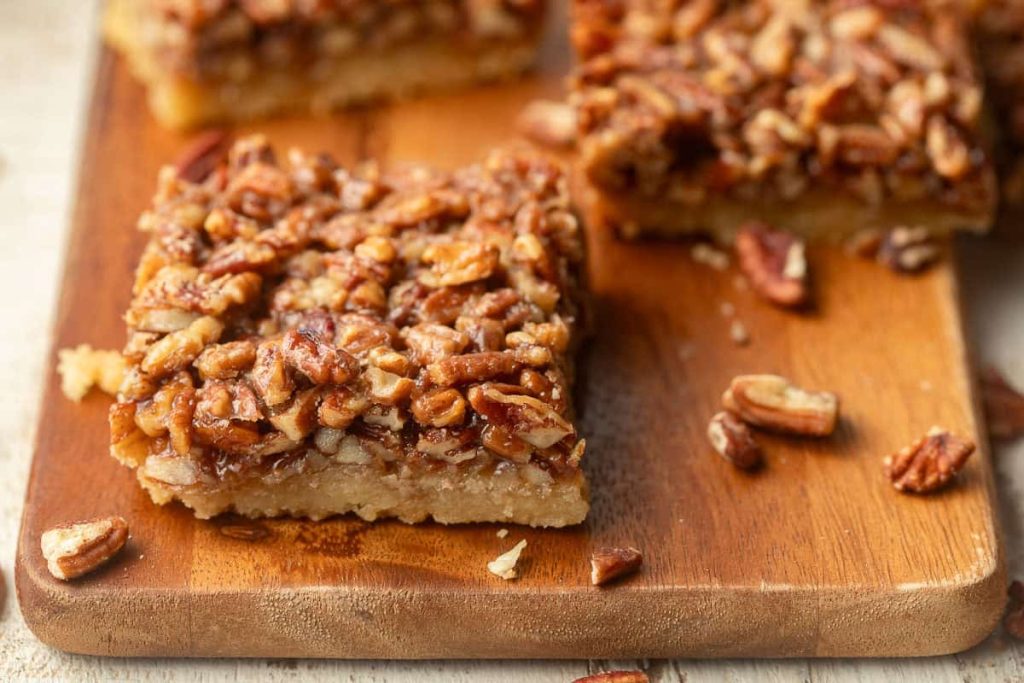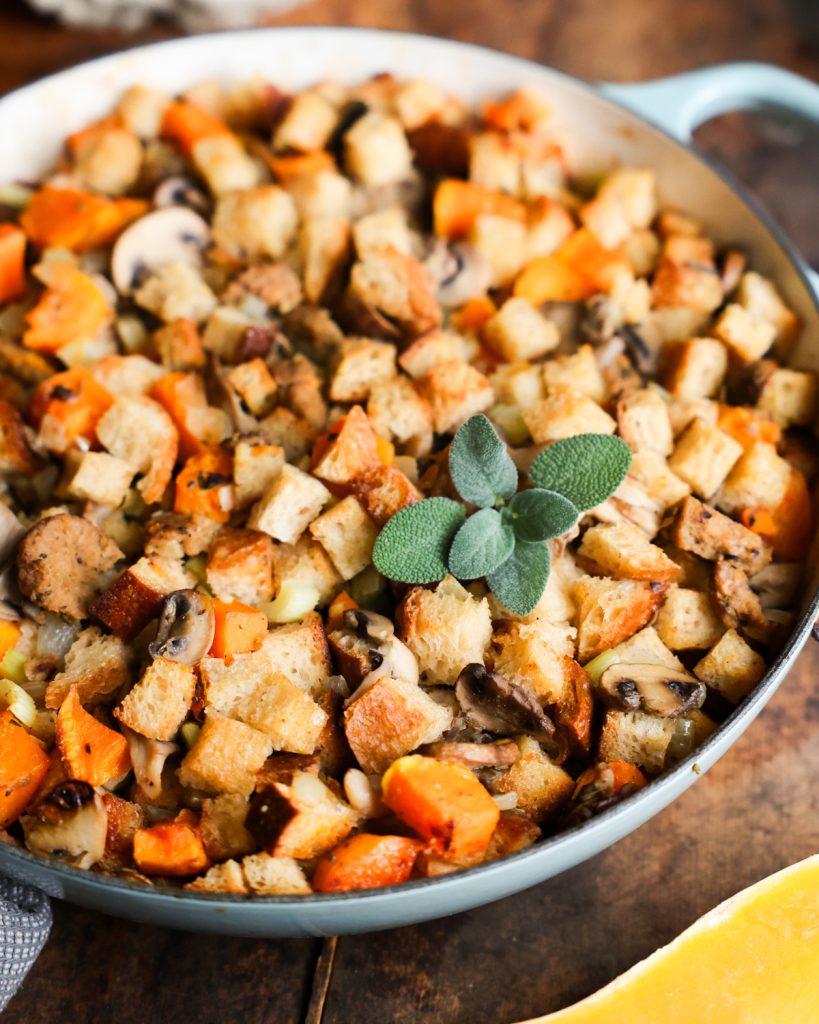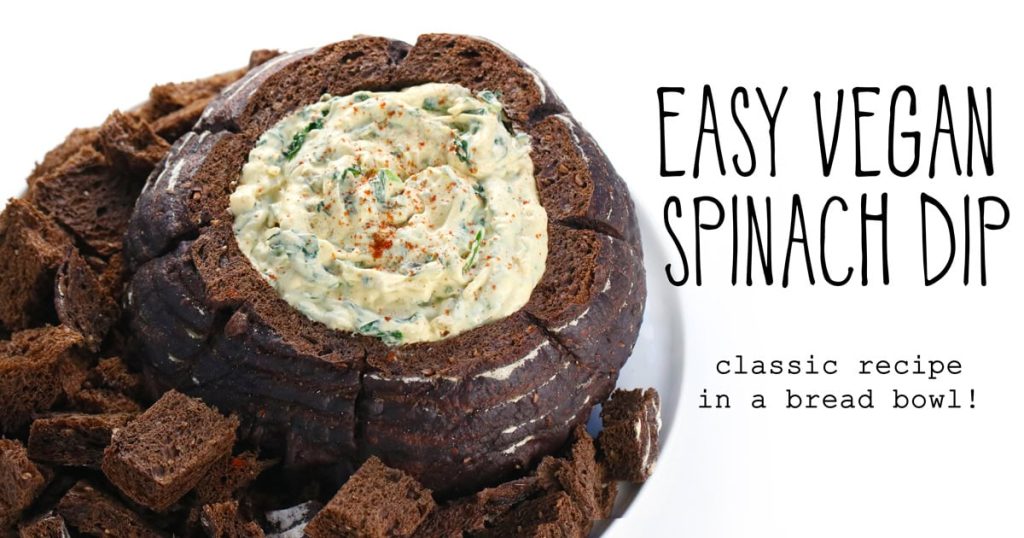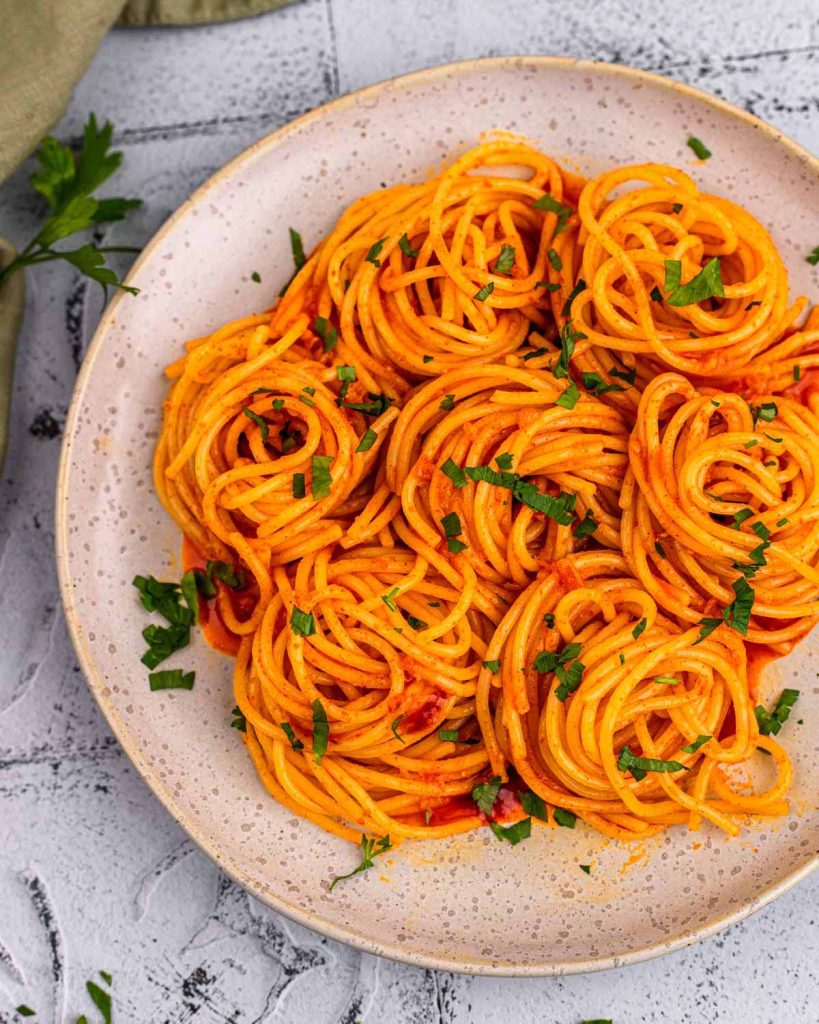
Tantalize your taste buds with these garlicky Gochujang Buttered Noodles, the ultimate quick-fix meal with bold flavors! Ready in under 20 minutes, this recipe offers a unique blend of spicy, savory, and slightly sweet tastes for an unforgettable culinary experience that is both comforting and exciting.
If you want a gourmet-tasting meal in a fraction of the time, these rich and creamy gochujang butter noodles won’t disappoint! This dish is both accessible and fun, made with common pantry items like spaghetti noodles, garlic, and butter, alongside distinctive gochujang paste – the star ingredient. The thick crimson Korean chili paste has a signature spicy-sweet and savory taste that perfectly complements the rich creaminess of vegan butter.
Al dente noodles are tossed in this brilliant red-hued gochujang butter sauce flavored with fragrant minced garlic, tangy rice vinegar, and a touch of sweetness from agave syrup. Each bite is a balanced combination of bold flavors and satisfying texture. This recipe inspired by the NYTimes gochujang noodles is also visually appealing with a pop of green scallions and cilantro garnish. With quick and easy preparation and irresistible taste and texture, these buttered gochujang noodles will surely become a favorite in your dinner rotation!
For more Asian-inspired noodle recipes, try my Vegan Cold Soba Noodle Salad with Mushroom Scallops, Vegan Japchae Style Noodles, or Sweet Potato Noodles with Creamy Almond Sauce.
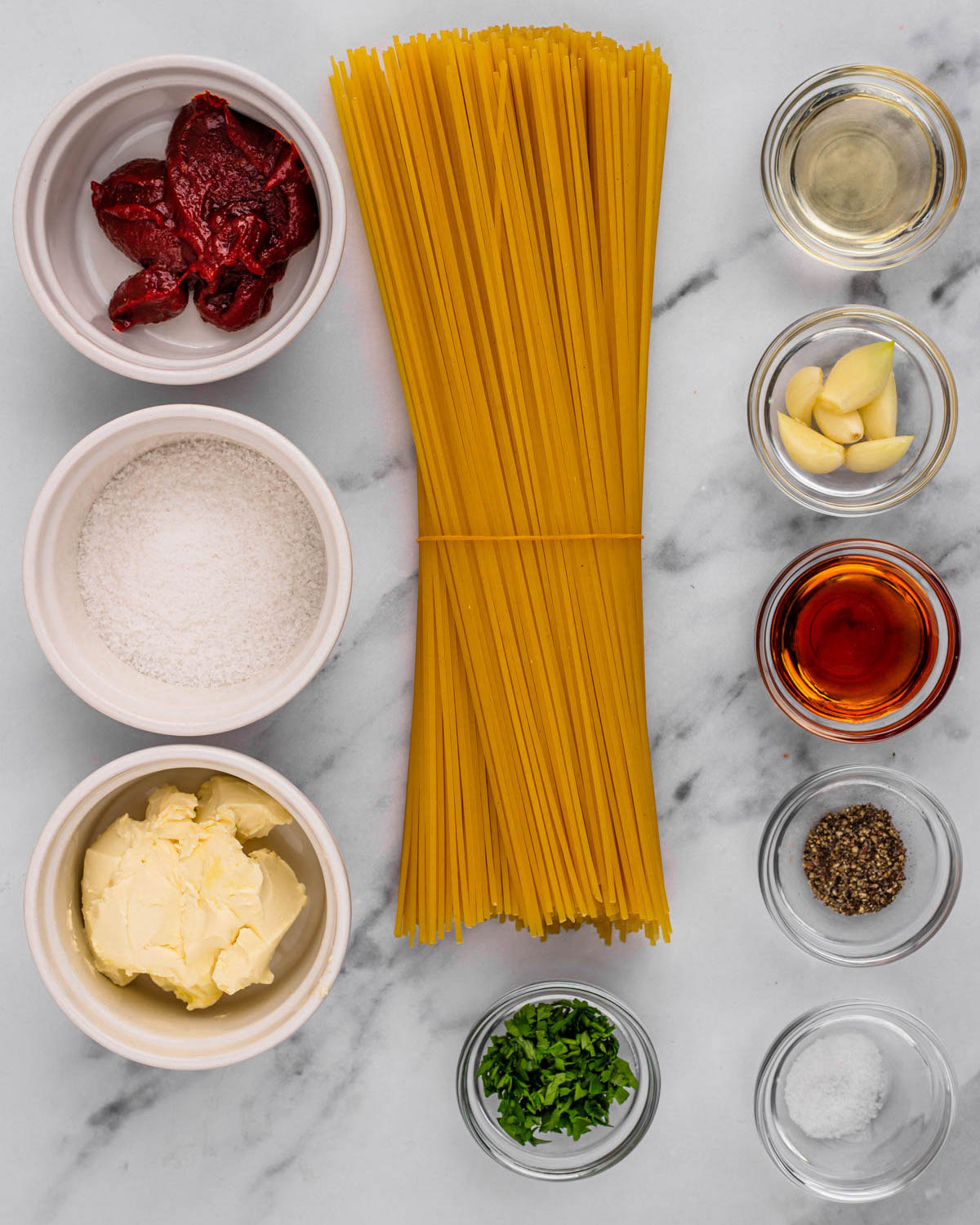
Ingredients
Spaghetti Noodles: Use traditional spaghetti noodles or any long pasta variety. For an authentic Asian flair, opt for udon or ramen noodles. If needed, use a gluten-free variation.
Vegan Butter: Adds a rich, creamy texture to the butter gochujang noodles while keeping it plant-based. Choose your favorite dairy-free brand or swap with regular butter if you are not vegan for a more classic buttery flavor.
Garlic Cloves: Fresh garlic is crucial for this gochujang pasta New York Ttime-inspired recipe to provide a distinct aromatic base for the sauce. Alternatively, use pre-minced store-bought garlic in a pinch.
Gochujang Paste: The key ingredient is this Korean chili paste, which has a complex spicy-sweet flavor profile and a red color. For the right consistency and taste, be sure to get gochujang paste, not sauce. You can find it in the Asian aisle or at a Korean market.
Rice Vinegar: Adds a subtle tang that balances the spiciness of the gochujang. If needed, substitute it with sherry vinegar for a similar acidity and slightly different flavor profile.
Agave Syrup: This natural sweetener helps mellow the spice and adds a hint of sweetness to the gochujang garlic noodles. For a different flavor profile, swap it for the same amount of maple syrup.
How to Make Gochujang Buttered Noodles
- Prepare Noodles. Bring a large pot of salted water to a boil over high heat. Add the spaghetti and cook according to package instructions. Reserve 1 cup of the pasta’s cooking water, then drain the spaghetti in a colander. Add the spaghetti back to the cooking pot.

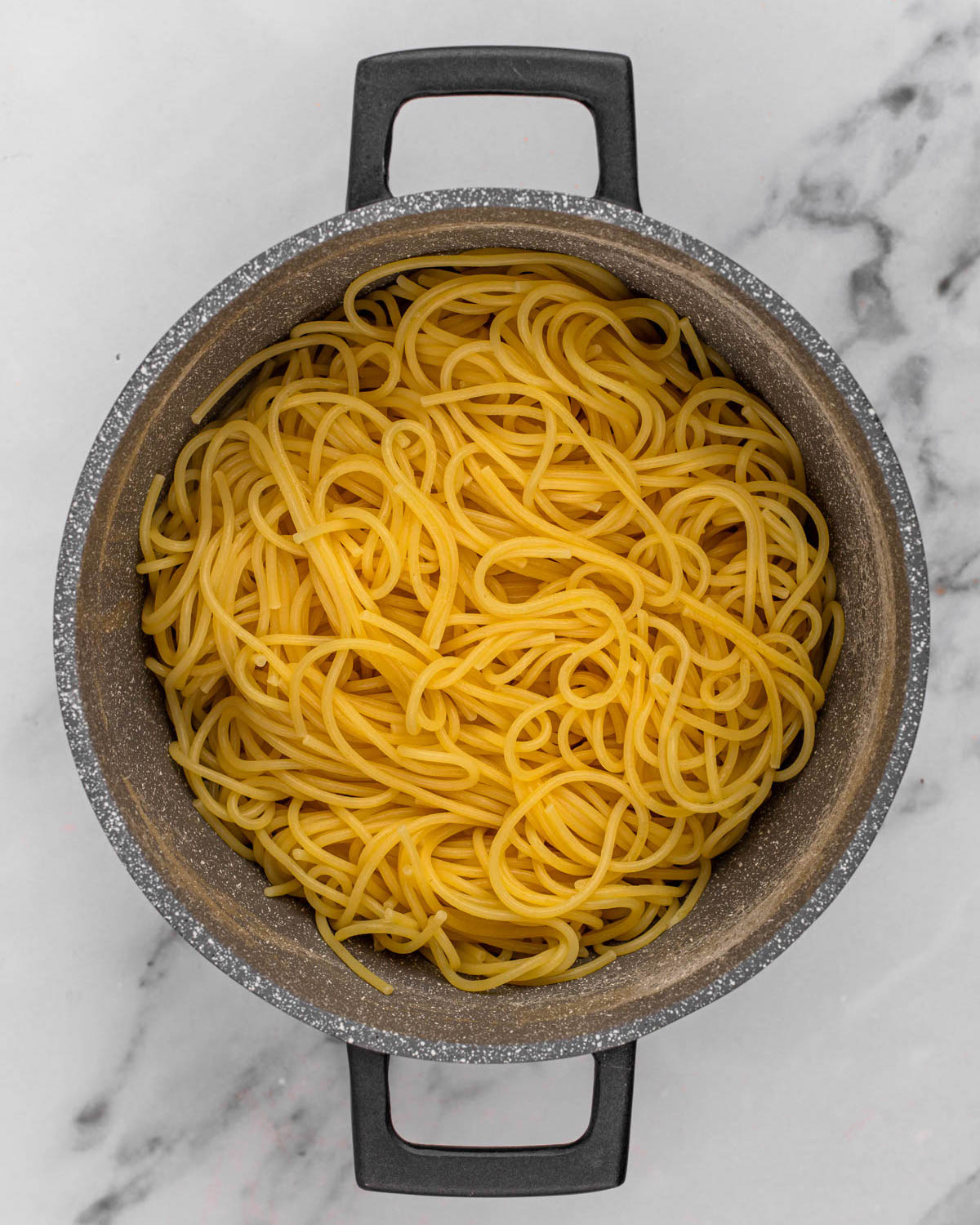
- Sauté Garlic. While the pasta cooks, warm 2 tablespoons of butter in a skillet over medium-low heat. Add the garlic and cook for 1 minute, until it turns golden but not brown.
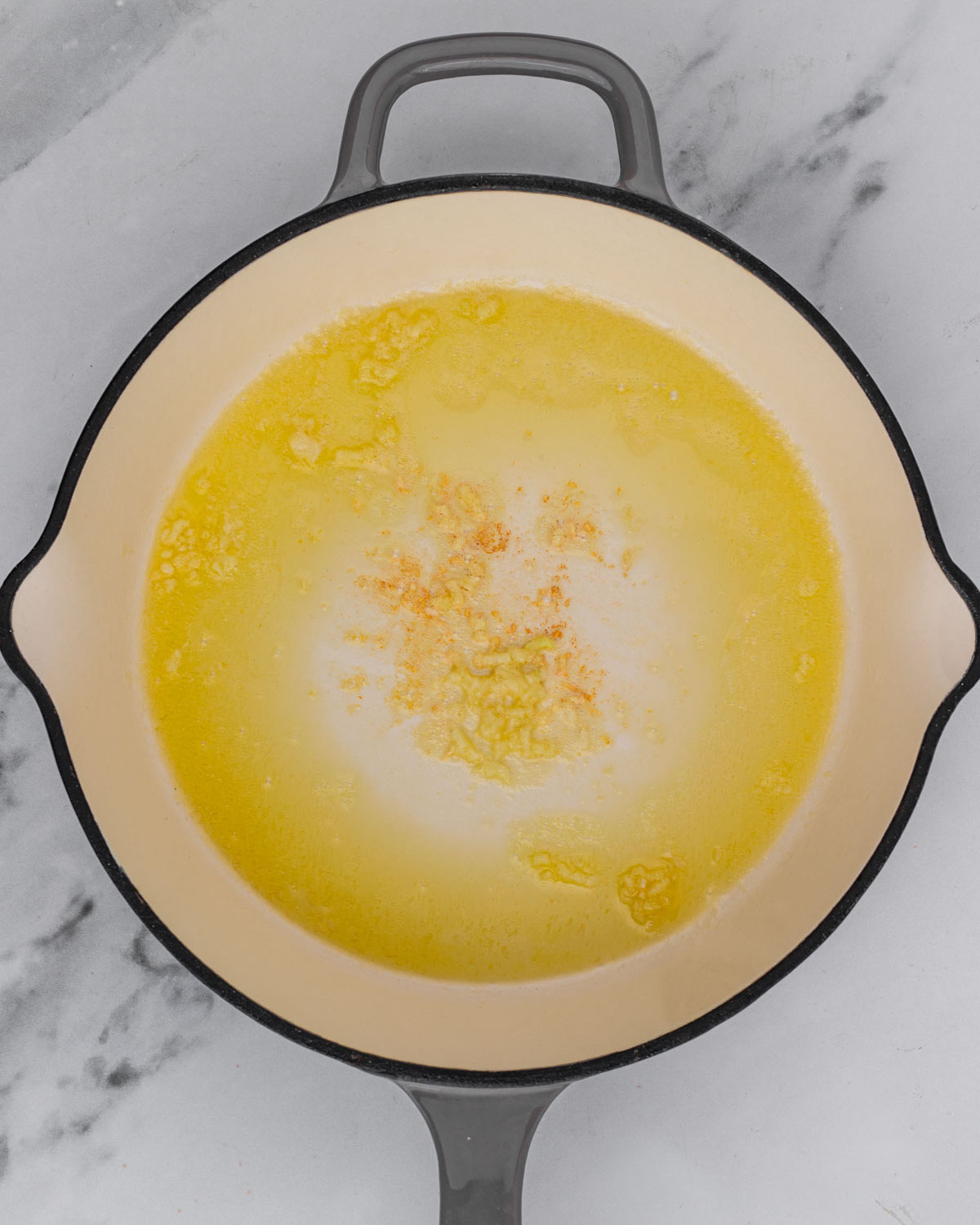
- Add Sauce Ingredients. Stir in the gochujang paste, vinegar, and agave. Bring the mixture to a simmer over medium heat and cook for 1 minute, stirring constantly. Then remove the skillet from the heat.
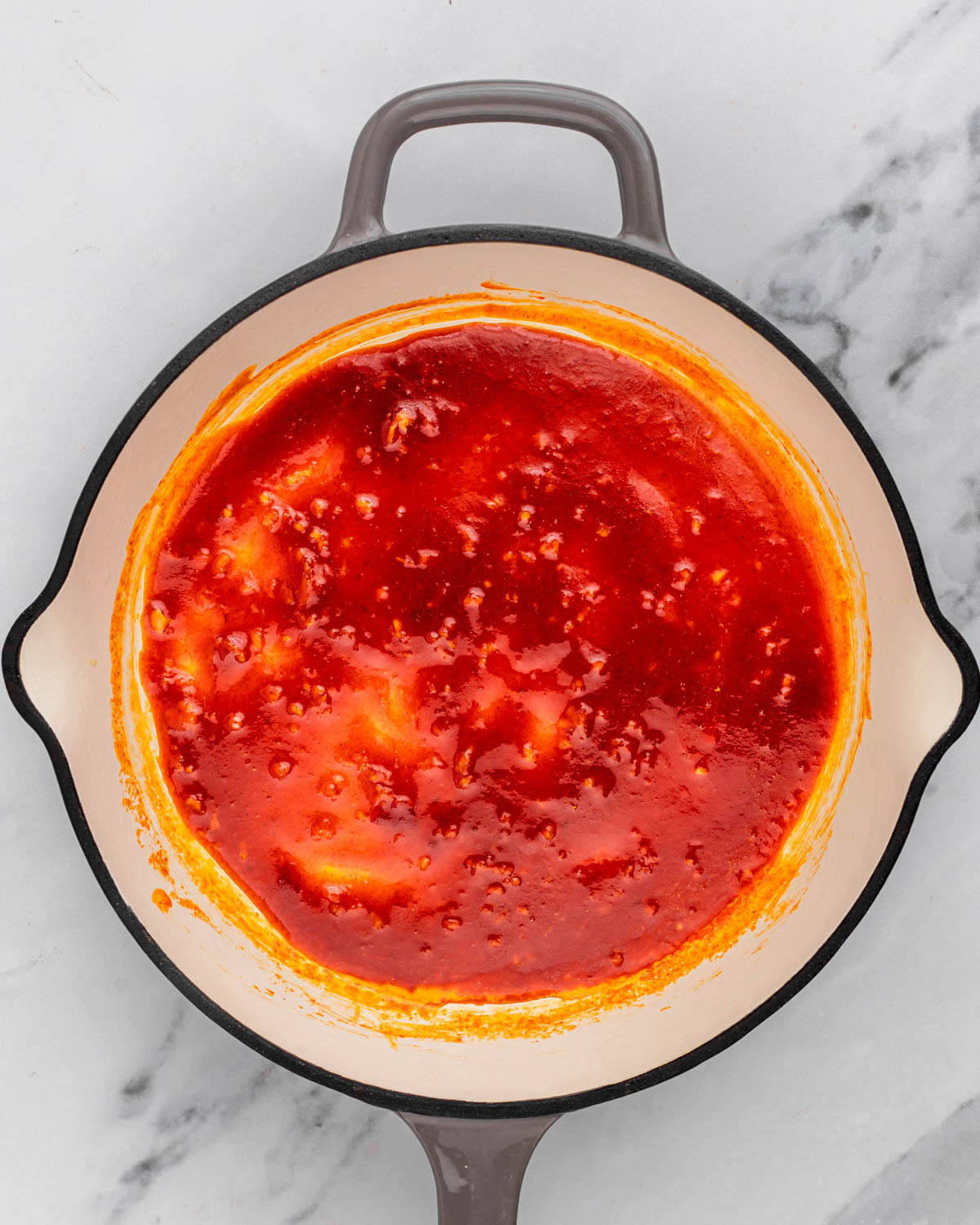
- Add Sauce to Noodles. Add gochujang sauce for the noodles and the remaining 1 tablespoon of butter into the pot of cooked spaghetti. Stir well until the butter melts and the noodles are coated. Add small amounts of the reserved pasta cooking water as needed to thin the sauce and help evenly coat the noodles.
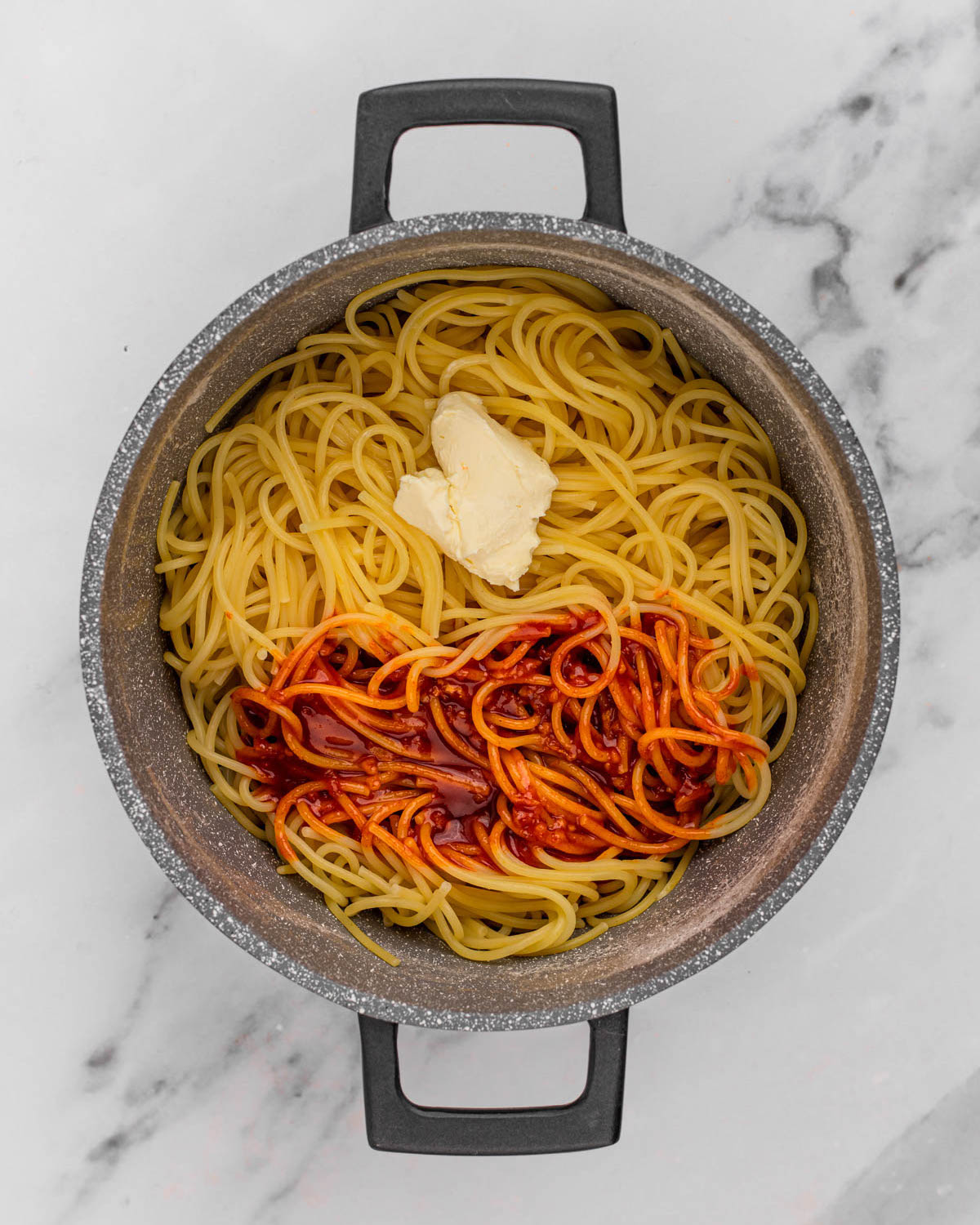
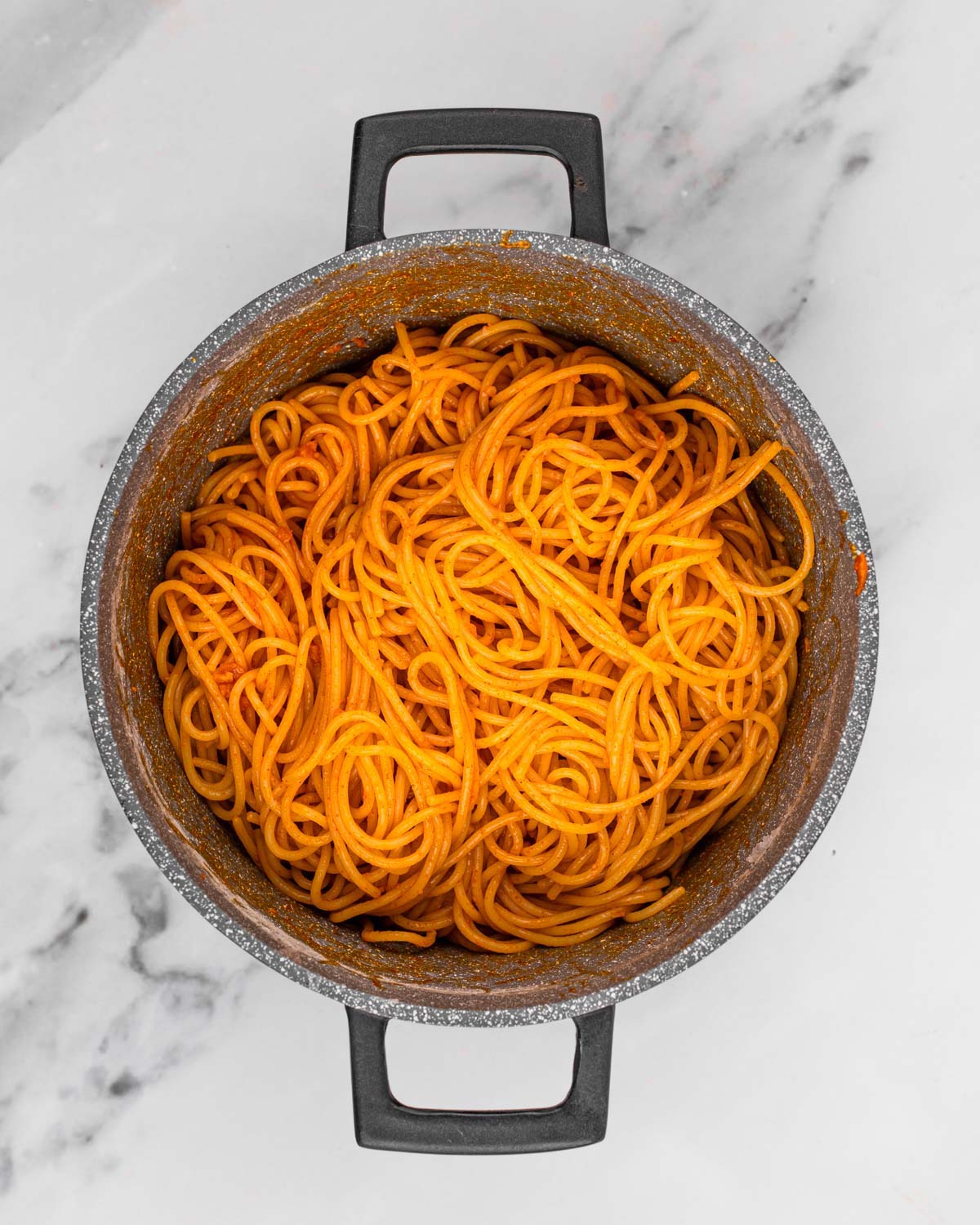
- Garnish. Season the noodles to taste with salt and pepper. Garnish with minced cilantro and scallions and serve hot!
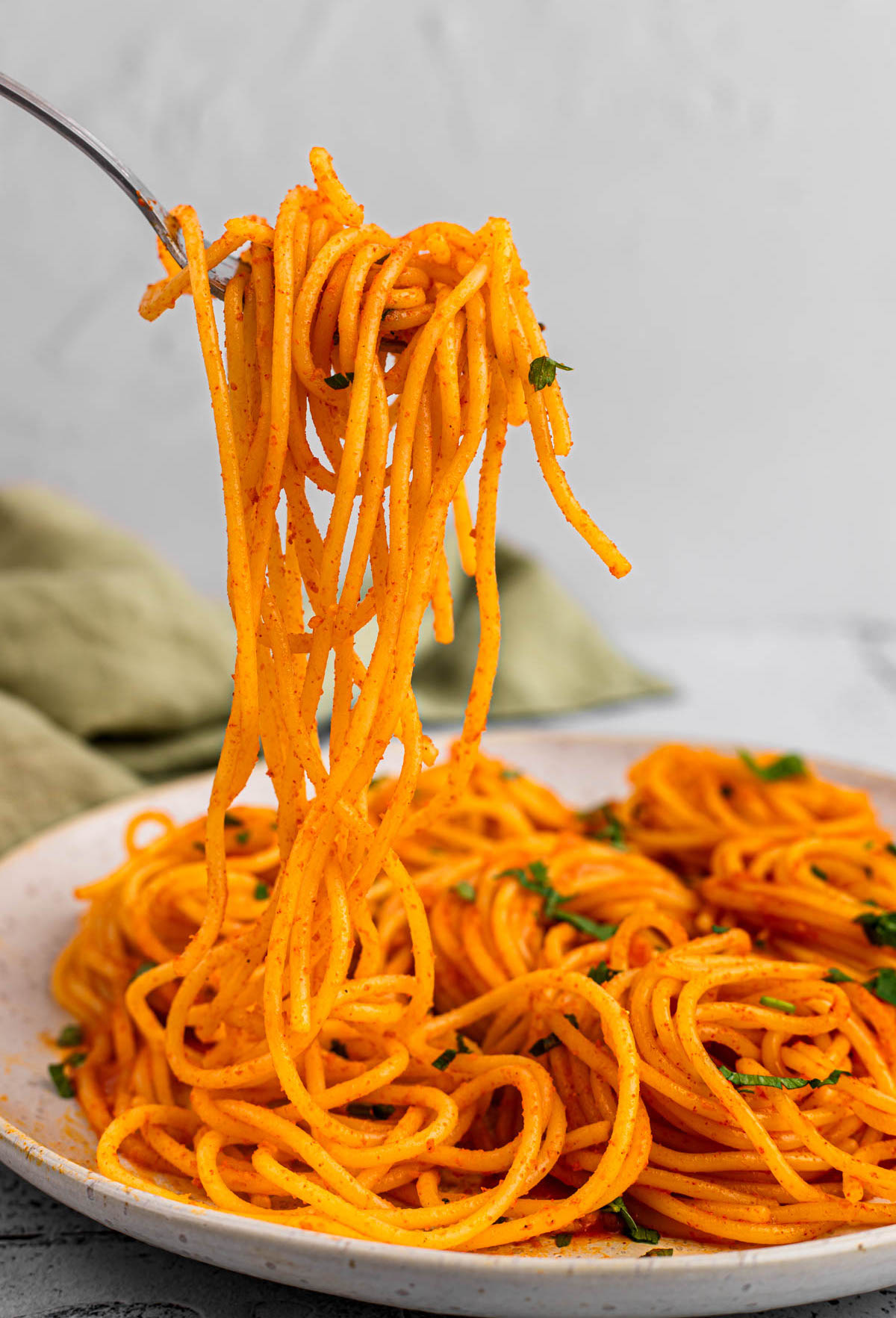
Recipe Pro-Tips
- Have all ingredients prepped and ready. Preparation is key for this quick-cooking dish. Measure and chop all ingredients before you begin. Once you start cooking, the process moves fast, and you’ll need to add ingredients promptly to prevent the garlic from burning.
- Heavily salt the pasta water. Ensure it is well-seasoned, almost resembling seawater. This step is crucial for infusing the noodles with extra flavor and a tender texture.
- Use high-quality gochujang paste. The flavor of the gochujang paste is pivotal to this dish. Opt for a high-quality brand to ensure the best blend of heat, sweetness, and umami.
- Reserve pasta water. Don’t forget to save at least 1 cup of the pasta water before you drain the noodles. This starchy water is essential for adjusting the sauce consistency so the noodles are perfectly coated.
- Balance the flavors. Taste the gochujang noodles recipe before serving and adjust the seasonings as necessary. Add a pinch of salt, black pepper, or a dash of extra vinegar to suit your desired taste.
- Garnish generously. Don’t skip the fresh scallions and cilantro. They add a refreshing contrast to the rich and spicy noodles and elevate the overall flavor profile of the dish.
Recipe Variations
Below are optional variations to personalize your noodles:
- Traditional Noodles: For the closest resemblance to the gochujang noodles New York Times recipe, substitute dairy butter for vegan butter and honey for agave nectar.
- Spicy Sesame: Enhance the heat and add a nutty note by adding an extra tablespoon of gochujang paste and 1 tablespoon of toasted sesame seed oil to the sauce mixture for a rich, aromatic finish. Then add toasted sesame seeds as an additional garnish!
- Protein: To make this a heartier dish, add tofu. Cut drained firm tofu into cubes and pan-fry until golden brown. Toss them in the sauce when you add the noodles for extra protein.
Serving Suggestions
Enjoy gochujang buttered noodles as a quick and satisfying lunch or dinner! Feel free to add additional toppings like a squeeze of fresh lime juice and crushed roasted peanuts, or pair with some of our favorite dishes below for a full-spread meal:
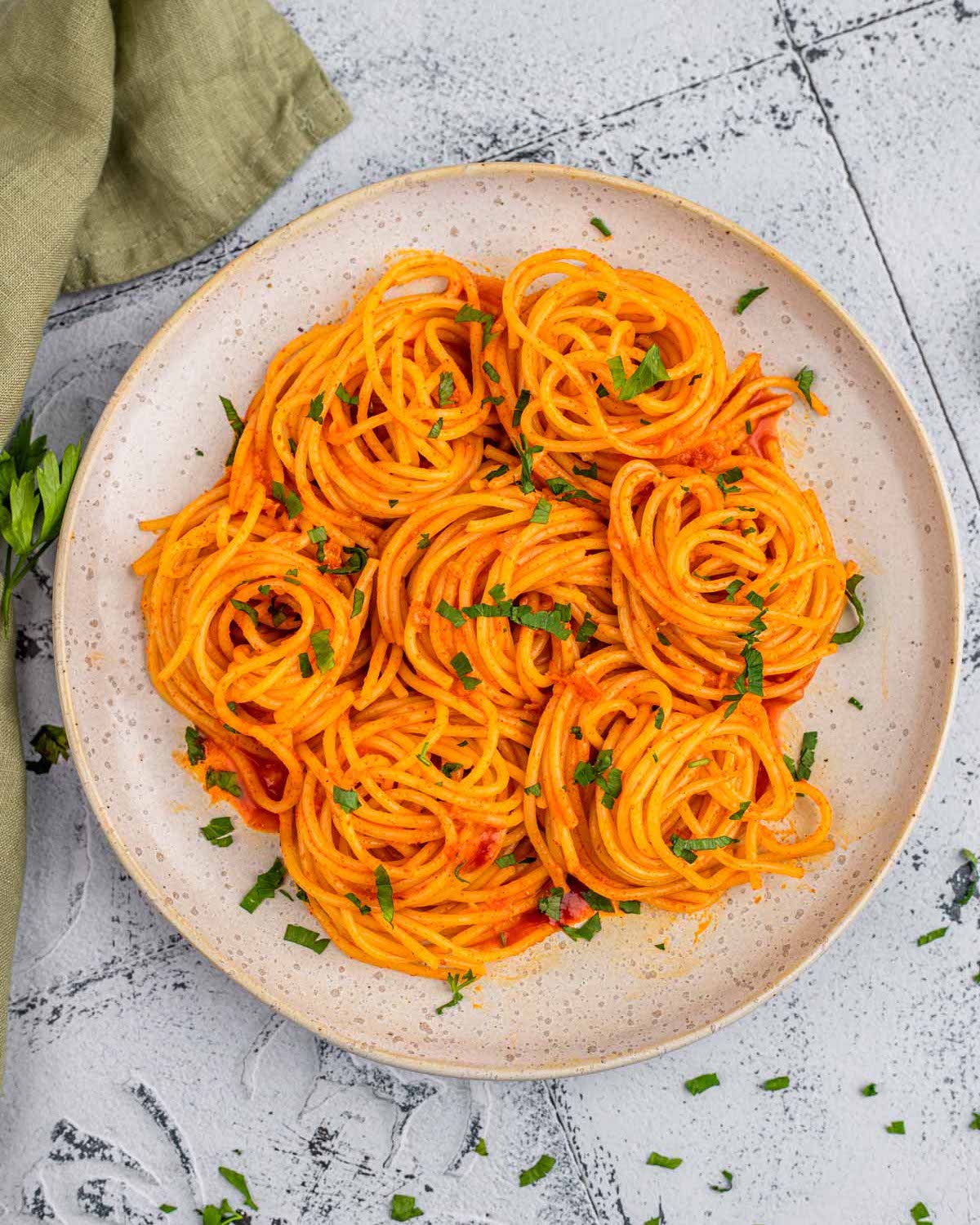
Storage Directions
- Refrigeration: Cool the noodles to room temperature before transferring them to an airtight container and storing them for 3-4 days.
- Freezing: Store cooled leftovers in a freezer-safe container for up to 3 months. Thaw frozen noodles in the refrigerator overnight before reheating.
- Reheating: Reheat refrigerated noodles in a skillet over medium heat with a splash of water or vegetable broth to loosen the sauce and restore the noodle’s moisture. Stir until heated through.
More Vegan Pasta Recipes
Recipe Card
Prevent your screen from going dark
-
Bring a large pot of salted water to a boil over high heat. Add the spaghetti and cook according to package instructions.
-
Reserve 1 cup of the pasta’s cooking water. Drain the spaghetti in a colander. Add the spaghetti back to the cooking pot and set it aside.
-
While the pasta cooks: warm 2 tablespoons of the butter in a skillet over medium-low heat. Add the garlic and cook for 1 minute, until it turns golden but not brown.
-
Stir in the gochujang paste, vinegar, and agave. Bring to a simmer over medium heat and cook for 1 minute, stirring constantly. Remove the skillet from the heat.
-
Pour the sauce and the remaining 1 tablespoon of butter into the pot of spaghetti. Stir well until the butter melts and the noodles are coated. Add small amounts of the pasta cooking water as needed to thin the sauce and help it coat the noodles evenly.
-
Season the noodles to taste with salt and pepper. Garnish with minced cilantro and scallions and serve hot!
Storage Directions
- Refrigeration: Cool the noodles to room temperature before transferring them to an airtight container and storing them for 3-4 days.
- Freezing: Store cooled leftovers in a freezer-safe container for up to 3 months. Thaw frozen noodles in the refrigerator overnight before reheating.
- Reheating: Reheat refrigerated noodles in a skillet over medium heat with a splash of water or vegetable broth to loosen the sauce and restore the noodle’s moisture. Stir until heated through.
Recipe Pro-Tips
- Have all ingredients prepped and ready. Preparation is key for this quick-cooking dish. Measure and chop all ingredients before you begin. Once you start cooking, the process moves fast, and you’ll need to add ingredients promptly to prevent the garlic from burning.
- Heavily salt the pasta water. Ensure it is well-seasoned, almost resembling seawater. This step is crucial for infusing the noodles with extra flavor and a tender texture.
- Use high-quality gochujang paste. The flavor of the gochujang paste is pivotal to this dish. Opt for a high-quality brand to ensure the best blend of heat, sweetness, and umami.
- Reserve pasta water. Don’t forget to save at least 1 cup of the pasta water before you drain the noodles. This starchy water is essential for adjusting the sauce consistency so the noodles are perfectly coated.
- Balance the flavors. Taste the gochujang noodles recipe before serving and adjust the seasonings as necessary. Add a pinch of salt, black pepper, or a dash of extra vinegar to suit your desired taste.
- Garnish generously. Don’t skip the fresh scallions and cilantro. They add a refreshing contrast to the rich and spicy noodles and elevate the overall flavor profile of the dish.
